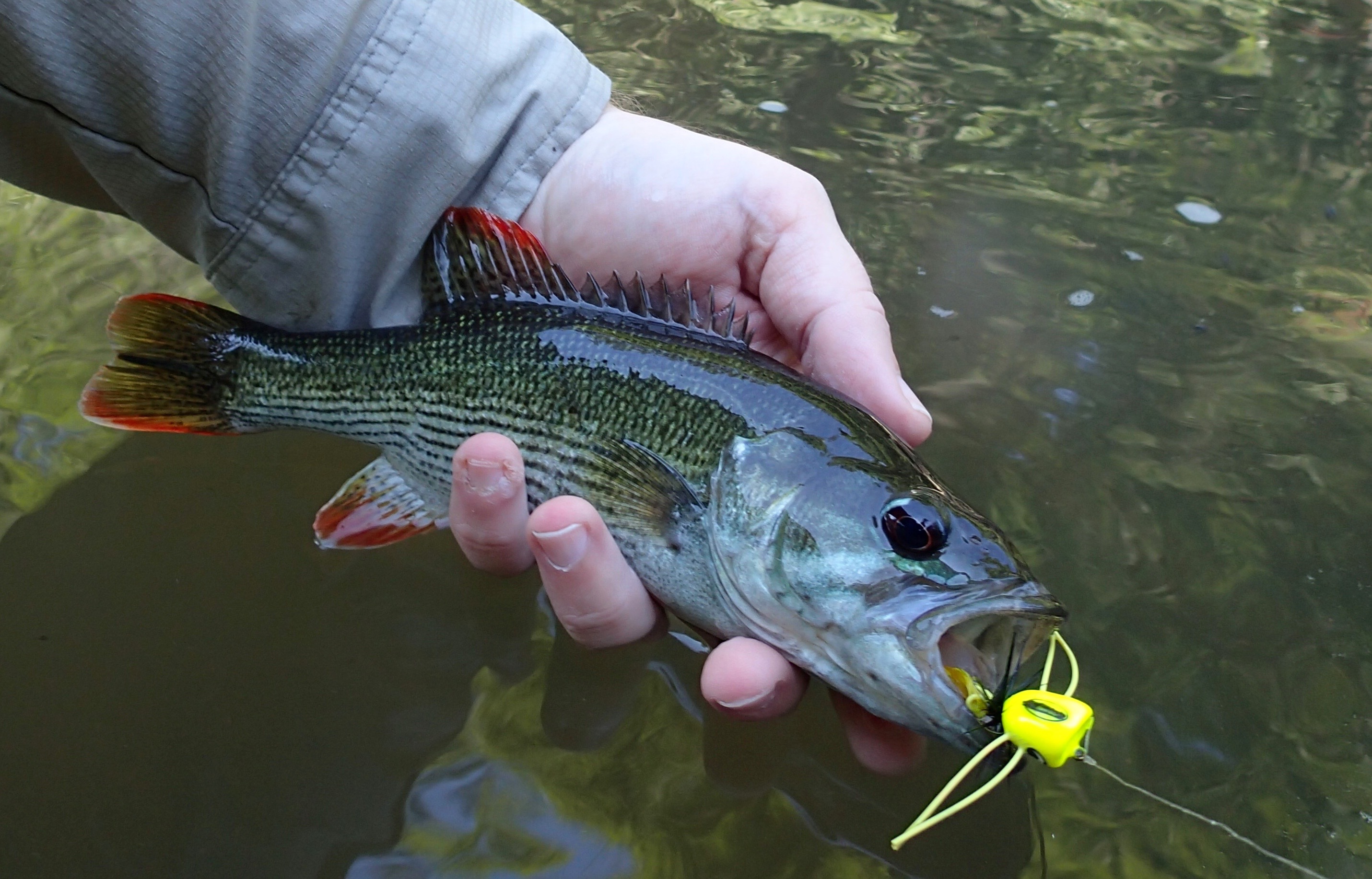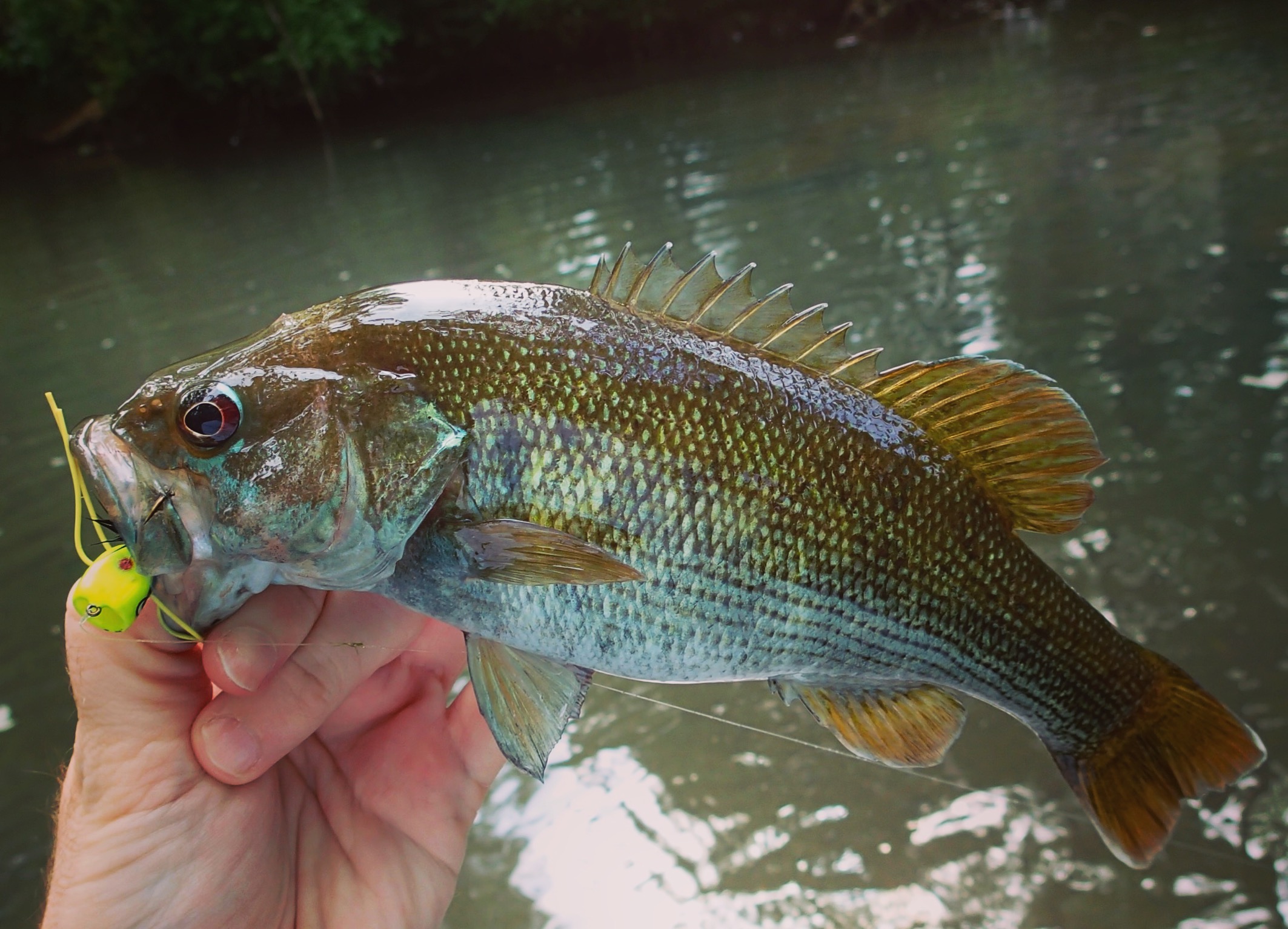Last summer, I picked up a new book: Fly Fishing for Redeye Bass: an Adventure across Southern Waters by Matthew R. Lewis. I grew up fly fishing for native Smallmouth Bass in the Ozarks, and have been interested in going after our local Bartram’s Bass in the upper Savannah.

I enjoyed the book immensely, and was just sitting down to write a review of it for this week’s post…when in my inbox came an email from the author himself! Matt is studying Redeye Bass for his PhD at Auburn, and we made plans to chat about research, but I couldn’t help asking for a Q-n-A. I had a few questions to ask Matt about this cool group of species, and how he came to write the book.
Q: What’s your background? What path led you to studying Redeye Rass and eventually writing this book?
I grew up in rural Alabama enjoying the outdoors and constantly questioning why the world is how it is. This led me to science and I wanted to be a geologist, then a marine biologist, then a doctor. I finished with a degree in cell biology, and went on to get a masters degree in microbiology from the School of Fisheries at Auburn University. I spent 5 years in Huntsville at the HudsonAlpha Institute for Biotechnology using state-of-the-art genomic tools to research cancer. Here I discovered fly fishing and small stream brook trout.
I later moved to Birmingham, AL… the heart of Redeye Bass country. It was the perfect substitute for backcountry Brook Trout. Once I discovered Redeye Bass, I wanted to learn as much as I could about them. The problem was, there really wasn’t much info out there. I wrote a magazine article for Eastern Fly Fishing magazine, but wanted to do more. When I decided to write the book, I tried to distill everything known about them, as well as how to catch them.
In writing the book, I spent a lot of time fishing for them all over the southeast and experiencing the unique challenges facing every river they call home. In doing so, the goal of the book became clear. These fish and the rivers they call home need a voice.
This really made me start to question my own career goals and direction. Why not use my experience in genetics and try to answer some of the questions surrounding Redeye Bass myself? Fast forward 6 months and here I am, back in Auburn, with a wife and a baby, pursuing a PhD in genetics and hoping to answer some of the major questions still surrounding Redeye bass

This is a very hot topic in the black bass world. All Redeye Bass were once considered to be Micropterus coosae, but anyone who spends time fishing for them knows they’re different. Some people loo at the morphological and genetic differences, and agree these fish are truly separate species, but others want to see more evidence.
Where do we draw the line? Some issues may need to be resolved, but for now, there are five formally described species of Redeye Bass, with each one being endemic to a particular drainage: M. coosae from the Coosa River in AL and GA, M. tallapoosae from the Tallapoosa River in AL and GA, M. cahabae from the Cahaba River in AL, M. warriorensis from the Black Warrior River in AL, and finally M. chattahoochae from the Chattahoochee River in AL and GA.
These fish are native to the above rivers, but they only live above the Fall Line in faster-flowing waters with a lot of rocky substrate. Usually, the best populations are in tributary streams.
Q: What makes this (group of) species unique from other, more well known bass?
Redeye Bass are unique because they are the smallest and slowest-growing of all black basses…maxing out at around 12 inches. This is not a bass that people are flocking to catch because of their size. It’s mostly a tight-knit group of fly anglers that enjoy the process and adventure of finding good redeye bass water almost as much as catching them.
Redeye Bass also have a variety of colorations that are not common on other bass species. When I say colors like red, orange, turquoise, you probably aren’t thinking about bass, but these are the colors of Bedeye Bass. Their limited range has also kept them pretty unique. You have to come to the Southeast to find them, at least in their native habitat. They have been introduced to California and even Puerto Rico!

Q: Many fly anglers focus on trout species. What are some similarities and differences between fly fishing for trout and Redeye Bass?
I tell people that the difference in fly fishing for Redeye Bass and trout is only the fish you bring to hand. Like fly fishing for Brook Trout, fly fishing for Redeye Bass is all about getting into remote and picturesque backwaters and catching a fish that is measured by beauty, not inches. While most people are up admiring the waterfalls from an overlook, you’re down there catching a fish that has swam in those waters since before the ice age. I can’t think of a more pure way to experience nature than catching native fish in its native habitat.
They also eat and behave like a trout. They like to get just out of the current, but stay close to it because that’s where their food is. Although they eat crayfish and other typical bass food items, in the spring and summer they dial in on insects, making them well accustomed to falling for a well presented fly. Unlike trout, Redeye Bass are not very picky or finicky eaters. They are voracious predators that attack anything that resembles food. Redeye bass are more hardy than trout, but care should still be taken as you handle these small fish.

Q: Are there any factors threatening Redeye Bass that we should be worried about?
Absolutely. Bartram’s Bass in the Savannah River are probably of the most concern. Non-native Alabama bass were introduced to the upper Savannah River system and has almost completely replaced Bartram’s Bass in several of the large impoundments. The invasive Alabama bass have can migrate quite a bit, and as habitat generalists, they can out-compete the more specialized Bartram’s Bass. They can also hybridize with the native Bartram’s Bass and go through repeated backcrossing causing a loss of pure Bartram’s Bass genetics.
A similar problem is facing Redeye Bass in the Chattahoochee River where multiple non-native black bass species are hybridizing with native Chattahoochee Bass. Coupled with habitat loss, these populations might not be around in a few decades. Populations in Alabama are doing better, or at least we think they are. Alabama bass are also native to the Mobile Basin, so they have co-evolved with Redeye Bass. However, the impact of hydroelectric dams, urbanization, and pollution have not been looked at in relation to Alabama Redeye Bass populations.

Q: What can we do as anglers to help protect these species?
Anglers can make sure they buy a fishing license, and encourage even their non-fishing friends to do the same. So much conservation work depends on fishing license sales, and as fishing sales continue to decline, the picture isn’t bright for conservation of important native species like Redeye Bass. They just don’t get the same attention as trout, and that has led to less funding for conservation and restoration in southern rivers than other regions of the US.
Another thing anglers can do is to join organizations like Native Fish Coalition, or your local riverkeeper. These organizations work tirelessly to protect the fish and the water resources they call home. Lastly, you can go fish for these wonderful species of Redeye Bass so that you can experience why they are so special and deserve our protection. Hopefully you’ll become an advocate for them as well, because if we don’t, who will?


How do you tell the male Bartram bass from the females I want o get a male.
I want to get a male Bartrams bass how do you tell the males from the female